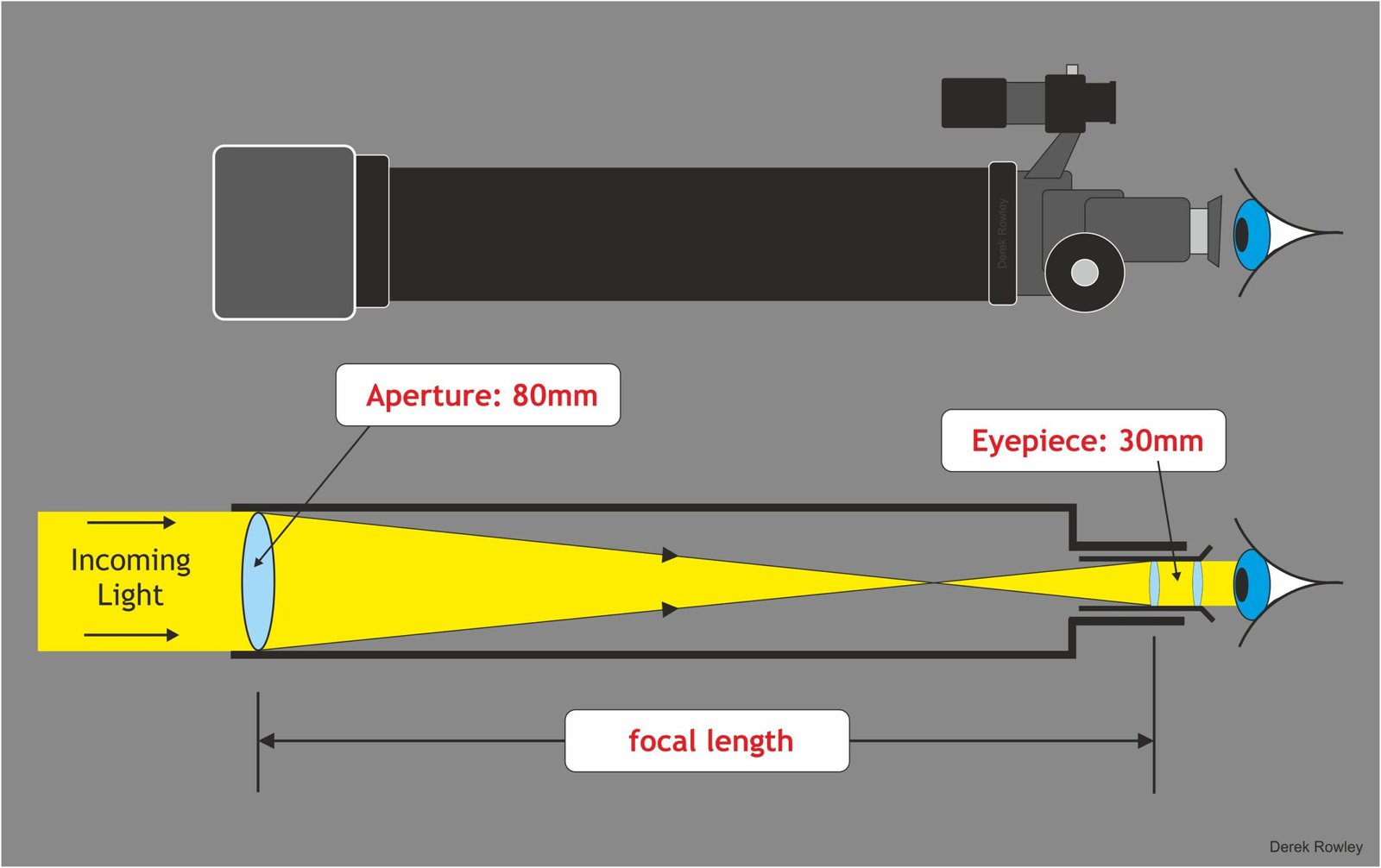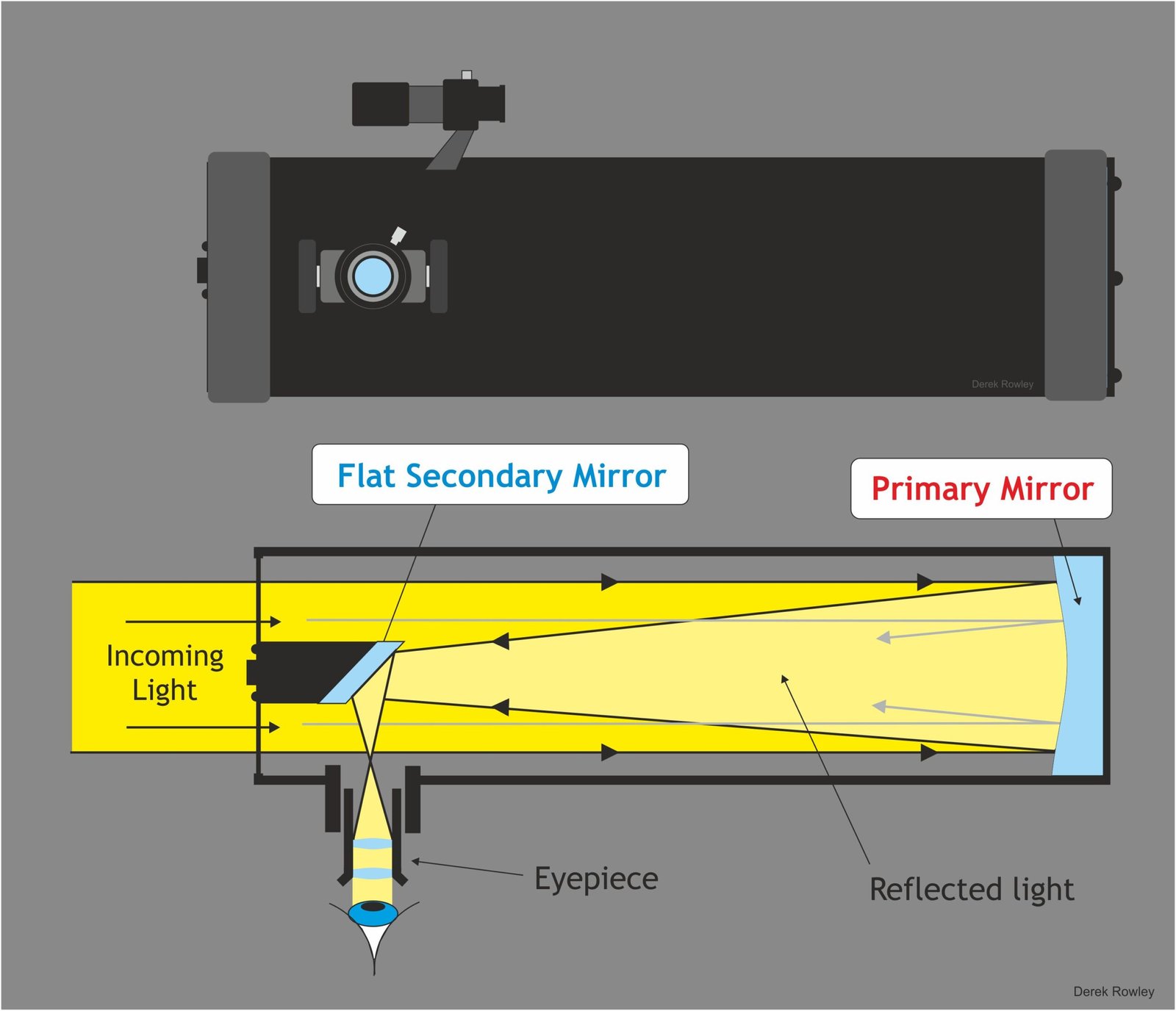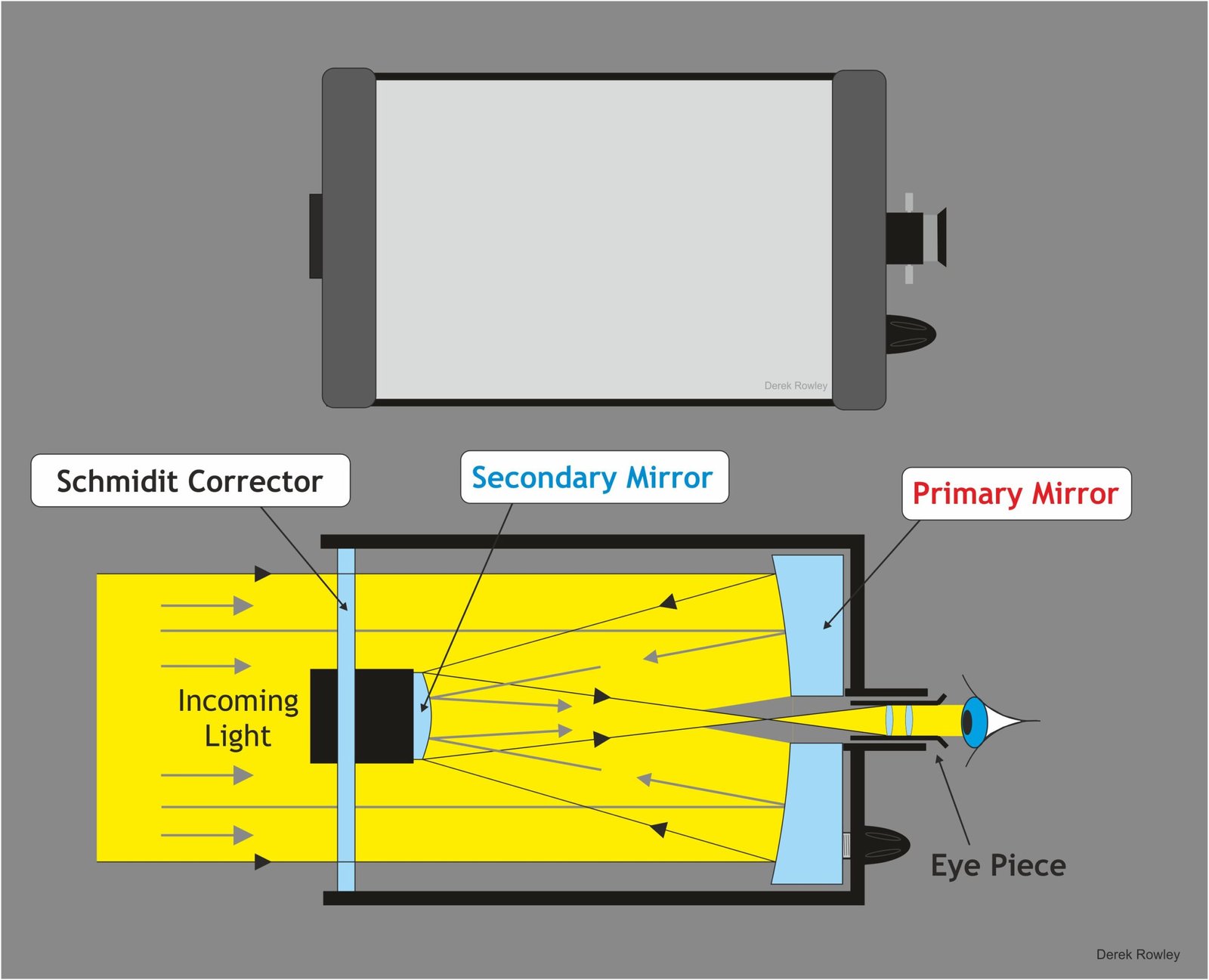Telescope Basic
There days are three main types of telescopes
Tube assembly and light path of three types of telescopes;
ooooo
oooo
BSL – Three types of telescopes
oooo
oooo
oooo
ooo
O
oooo

(1) Refractor (objective lens)
Uses lenses
They are low maintenance, tend to be smaller and very light weight, hence they are very portable.
oooo
oooo
O
O

(2) Reflector (Newtonian)
Uses mirrors
Most reflecting telescopes on the market are made in the Newtonian design, where you see the eyepieces placed near the front of the tube, rather than the back.
oooo
oooo
oooo
oooo
O

(3) Cassegrains (SCT)
o
Uses both – lenses & mirrors
Essentially, reflection and refraction are combined into a single system.
![]()
BSL Version
oooo
oooo
oooo
oooo
oooo
oooo
oooo
oooo
oooo
oooo
oooo
oooo
BSL – (1) Refractor
(1) Refractor
OOOO
- Use objective lens (no mirror) to collect and focus light.
o - This is one of the oldest models of telescopes and widely used.
o - These design is seen mostly in the beginner scopes.
o - They have an aperture lens and an eyepiece at the ends.
o - Experts for the Moon and planets.
O
o
![]()
BSL Version
oooo

OOOO
OOOO
OOOO
OOOO
![]()
Pros
- It has fantastic revolving power.
o - Light never reflects in this tube assembly.
o - The optical alignment is nearly permanent so you do not need to have headache on maintenance.
o - The design and eyepiece is simple.
o - It has long focal ratios that means longer focus.
O
O
oooo
oooo
oooo
![]()
Cons
- The cost is higher than the reflector telescopes.
o - Expensive at large apertures.
o - APO (Chromatic aberration) and blurring if it is not corrected which causes change of colour of the image.
o
oooo
oooo
oooo
oooo
oooo
![]()
BSL Version
oooo
oooo
oooo
oooo
oooo
oooo
oooo
oooo
oooo
BSL – (2) Reflector (Newtonian)
(2) Reflector (Newtonian)
o
OOOO
- Collect light with a primary mirror and flat secondary mirror.
o - The reflector telescopes designed by Newton do not use lens, it uses mirror.
o - A small flat secondary mirror is used here to direct the light to the eyepiece.
o - Lasting throughout the year or through many years.
![]()
BSL Version
oooo

OOOO
OOOO
oooo
oooo
oooo
oooo
![]()
Pros
- It has better light collection ability than the refractors as it has large mirrors.
o - Large apertures – Dobsonian possible.
o - No APO (chromatic aberration).
o - The cost is relatively low.
o - Very many models available.
o
O
oooo
oooo
![]()
Cons
- Optical quality is sometimes disappointing and not very good for astrophotography.
o - You have to collimate it before.
o - The tube is open, so you have to take care of the dusts and humidity.
o - A little bit bulky and heavier.
o
oooo
oooo
oooo
oooo
![]()
BSL Version
oooo
oooo
oooo
oooo
oooo
OOOO
BSL – (3) Cassegrains
(3) Cassegrains
OOOO
- This design uses a spherical mirror – most importantly it ha a curved and thin piece of glass at the very front that helps to correct the output of spherical mirror.
o - Cassegrain telescopes are unique as they use a primary mirror, but with a hole at the centre. It can direct the light towards the back.
o - The secondary mirror is a concave mirror, i.e. not flat like newtonian. It enhances the focal length and in turn provides better performance.
o - Cassegrain telescopes are not widely available like the other two mentioned before.
o - Schmidt Cassegrain and Maksutov telescopes are made based on this design and they are also very popular.
o - Compact and easy to transport.
O
o
oooo
oooo
oooo
oooo
![]()
BSL Version
oooo

OOOO
OOOO
oooo
oooo
oooo
oooo
OOOO
![]()
Pros
- This is great for sky observation and astrophotography.
o - The optics can be folded that makes it lighter and shorter.
o - It has a focal reducer so that you can use it in versatile purpose.
o - High viewing comfort.
O
O
oooo
oooo
oooo
oooo
![]()
Cons
- It is expensive.
o - Views are narrower and exposures are longer.
oooo
oooo
oooo
oooo
oooo
![]()
BSL Version
oooo
oooo
oooo
oooo
oooo
oooo
oooo
OOOO
BSL – Essentially modern telescopes fall into two categories
Essentially modern telescopes fall
into two categories
oooo
Automated models
(GOTO / GPS)
or
traditional manual telescopes.
o
Both require some knowledge of the Night Sky!
oooo
oooo
People often ask me “which telescope?”
to want to own a telescope.
o
Telescopes do NOT really matter whether you have
a large or small budget.
o
What`s important is that you choose a telescope
that satisfies your needs and initial abilities
successfully so that you enjoy this engaging
hobby that is astronomy!
OOOO
O
oooo
oooo
oooo
oooo
![]()
BSL Version
OOOO
Return to
- BSL – Three types of telescopes
- BSL – (1) Refractor
- BSL – (2) Reflector (Newtonian)
- BSL – (3) Cassegrains
- BSL – Essentially modern telescopes fall into two categories
oooo
Go to other pages:
oooo
- Your First Night Sky (beginners)
…….– Recommend to be first recognisable pattern in your night sky – The Plough.
Recommend to be first recognisable pattern in your night sky – The Plough.
…….– How to find True North without a compass?
How to find True North without a compass?
…….– Recognising Pattens by the brightest stars.
Recognising Pattens by the brightest stars.
o
- Derekscope’s Basic Information
…….– In viewing between methods – Naked-Eye/Binoculars/Telescopes
In viewing between methods – Naked-Eye/Binoculars/Telescopes
…….– Choosing which binocular to buy?
Choosing which binocular to buy?
…….– Types of telescopes (Refractor / Reflector / Cassegrains)
Types of telescopes (Refractor / Reflector / Cassegrains)
…….– Before you buy eyepieces.
Before you buy eyepieces.
…….– Before you buy Optolong astro-filters.
Before you buy Optolong astro-filters.
…….– How to read a telescope magnification?
How to read a telescope magnification?
o
- Derekscope’s Observing the Deep Sky
…….– Dark Adaptation, your eyes need!
Dark Adaptation, your eyes need!
o
oooo
Back to homepage:
